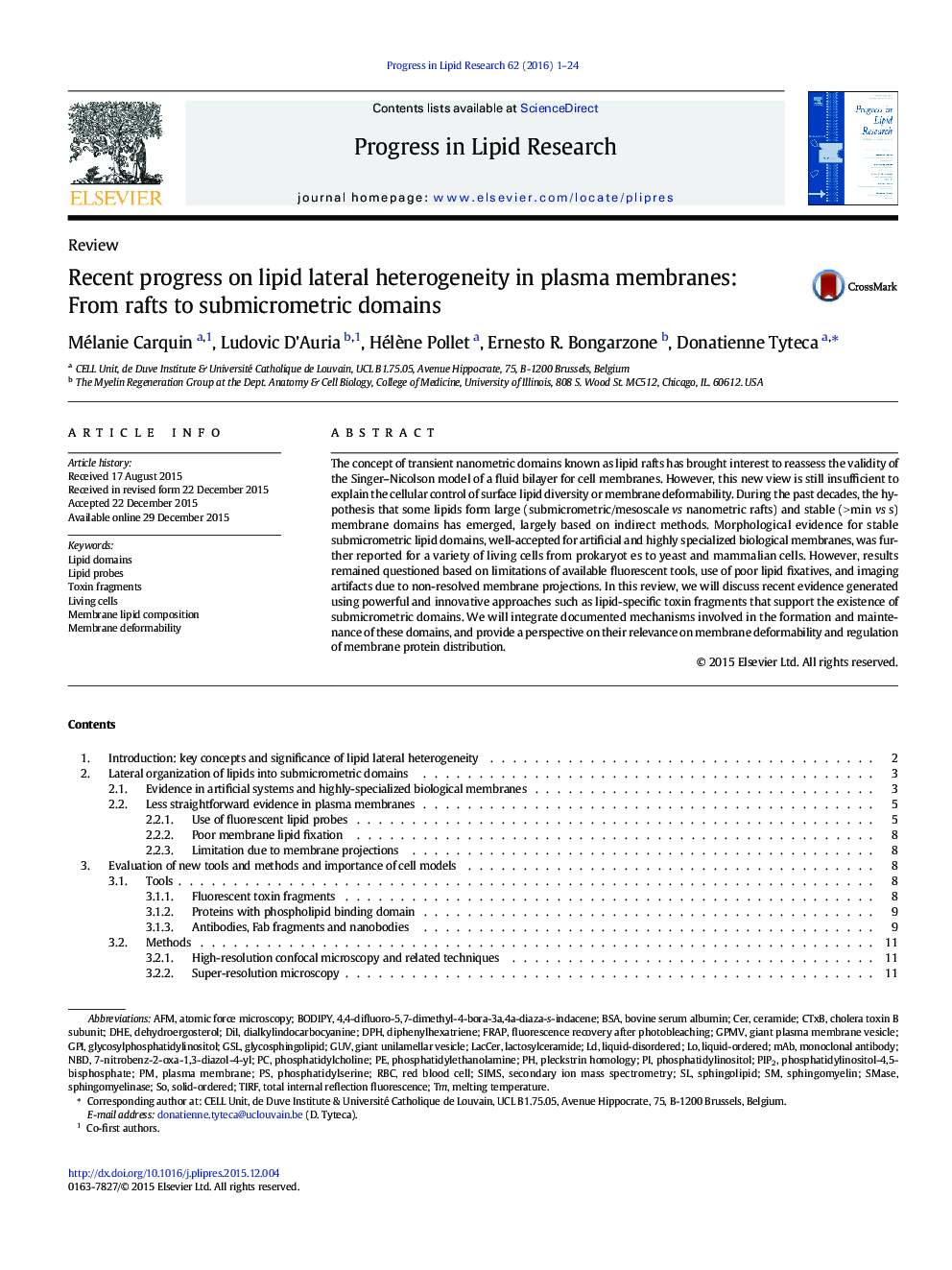| Article ID | Journal | Published Year | Pages | File Type |
|---|---|---|---|---|
| 2019087 | Progress in Lipid Research | 2016 | 24 Pages |
The concept of transient nanometric domains known as lipid rafts has brought interest to reassess the validity of the Singer–Nicolson model of a fluid bilayer for cell membranes. However, this new view is still insufficient to explain the cellular control of surface lipid diversity or membrane deformability. During the past decades, the hypothesis that some lipids form large (submicrometric/mesoscale vs nanometric rafts) and stable (> min vs s) membrane domains has emerged, largely based on indirect methods. Morphological evidence for stable submicrometric lipid domains, well-accepted for artificial and highly specialized biological membranes, was further reported for a variety of living cells from prokaryot es to yeast and mammalian cells. However, results remained questioned based on limitations of available fluorescent tools, use of poor lipid fixatives, and imaging artifacts due to non-resolved membrane projections. In this review, we will discuss recent evidence generated using powerful and innovative approaches such as lipid-specific toxin fragments that support the existence of submicrometric domains. We will integrate documented mechanisms involved in the formation and maintenance of these domains, and provide a perspective on their relevance on membrane deformability and regulation of membrane protein distribution.
